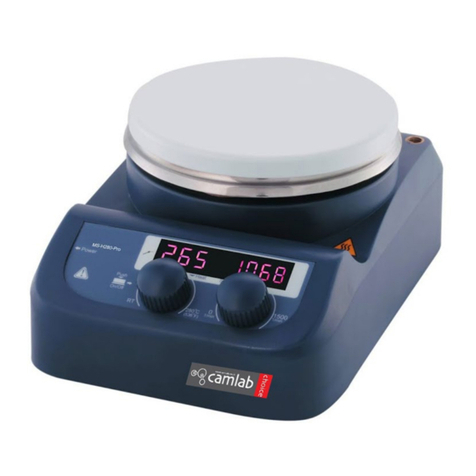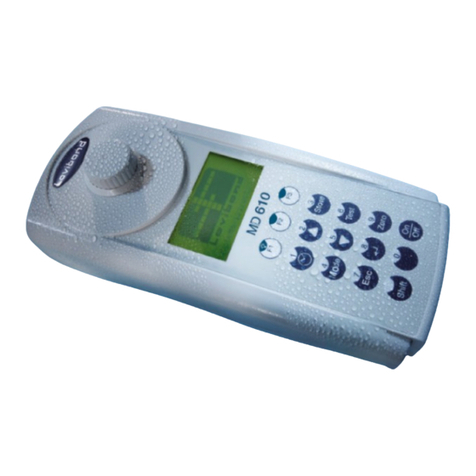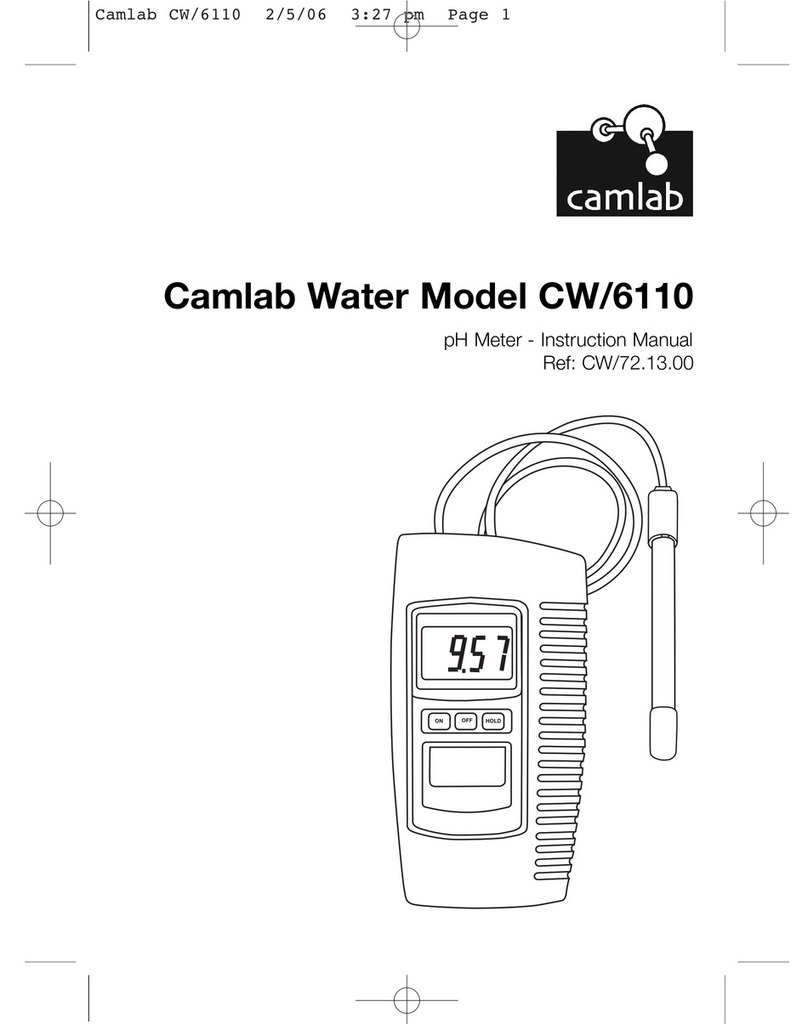
+44(0) 1954 233 144
Operation
Connect the electrode to the meter being used for
analysis.
Prepare a series (at least 2) of standards that
bracket the expected sample concentration. This is
best done by serial dilution of the stock solution.
Ideally standards should be a decade in
concentration apart e.g. 1, 10, and 100 ppm.
Dispense 50 ml of each standard into analytically
clean beakers. (100 to 150 ml size is perfect)
Add I AB in the appropriate ratio. As a guide with
sample concentrations in the 1 to 1000 ppm range 1ml
of a 5 Molar I AB to 50 ml sample is satisfactory
Rinse the electrode with deionised water and blot
dry with a lint free cloth and place in the lowest
standard. When the reading is stable record the
mV value.
Repeat step for all subsequent standards
proceeding from lowest to highest.
Use an ion meter to create a calibration curve or
plot a calibration curve on semi log paper using
mV values on the linear Axis and concentration on
the log scale. Note that towards the end of the scale
the curve is not linear.
Rinse the electrode in deionised water and blot
dry. Place the electrode in the sample and record
the stable mV value.
Using the calibration curve determine the
unknown sample concentration.
NOTE: The TRUEscience app allows you to save
sets of tandard Dilutions and creates a calibration
curve using your readings . This curve will then
be used to calculate your sample readings and can
then be referred to at any point in the future. It also keeps
track of the batch of tandard and I AB’s used.
Iodide ISE
The TRUEscience ion selective electrode has a solid-
state PVC Polymer membrane with an integral
dri-tek reference.
The electrode is designed for the detection and analysis
of Iodide ions in aqueous solutions and is suitable for use
in the field, in the laboratory, and in on-line
analysers
Installation
Connect the I E directly to the TRUEscience MART cap
or to a mV or ion meter using an appropriate adapter
cable. Remove the black protective cap and keep it in a
safe place.
The I E can be used immediately but pre soaking for 5
minutes in a 100ppm Iodide solution is recommended.
The ionic strength of the standards and solutions should
be kept constant between all standards and samples.
This is achieved by the simple addition of a Ionic trength
Adjustment Buffer(I AB). odium Nitrate is ideal.
A typical addition would be 1 ml of 5M I AB to 50 ml of
standard and sample. For low level measurements,
below 50 ppm in relatively pure samples, no I AB is
needed.
No temperature correction is necessary however
standards and samples should be measured at the same
temperature.
Begin calibration from the lowest concentration
standard to avoid cross contamination. Calibration should
cover the anticipated range of the samples.
Rinse tip with deionised water between
measurements.
Avoid strongly acidic or alkaline samples, strong deter-
gents and organic solvents.
Storage and Maintenance
After use rinse with deionised water, wipe clean with a
tissue or lint free cloth, replace protective cap and store dry in
its box.
If performance becomes sluggish, rinse with dilute
detergent, then rinse with deionised water and immerse the
tip in a 1000ppm Iodide solution for 1 hour.
Tips For Successful Analysis
TRUEscience I E’s are designed to be used with the
TRUEscience MART Cap but can be used with any pH/mV
meter or Ion meter. You will require an adapter cable with an
7 female to the connector type for your meter. This is
usually BNC or DIN and these cables are available from your
TRUEscience distributor.
Meters with a 0.1 mV resolution are recommended whilst
dedicated Ion meters will provide direct concentration
readouts saving time and effort in constructing calibration
curves and performing calculations. Your TRUEscience
distributor can advise on the most suitable meter.
Magnetic stirrer/stirrer bars are recommended for
laboratory analysis. Please operate at the lowest constant
speed available.
emi-logarithmic (4-cycle) graph paper is required for prepar-
ing calibration curves when you are using a mV meter.
Required Solutions
Distilled or deionised water will be required to prepare
tandards, I ABs and to rinse the electrode between
measurements.
1000 ppm Stock Standard solution. Used for
preparation of tandards. (Prepared by customer)
ISAB. Used to adjust the Ionic strength of all standards and
samples. Typical addition is 1 ml of I AB to 50ml of all stan-
dards and samples.



























